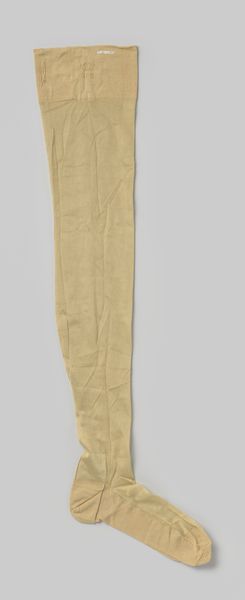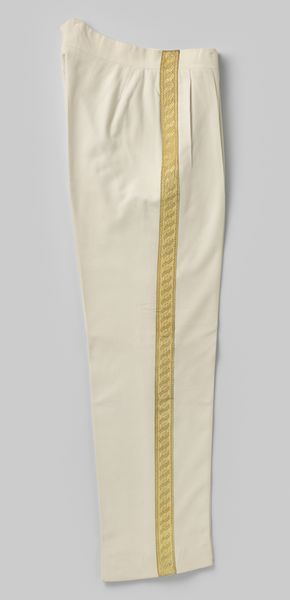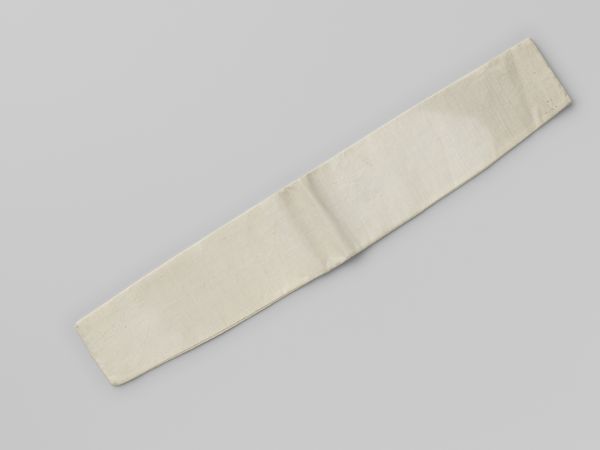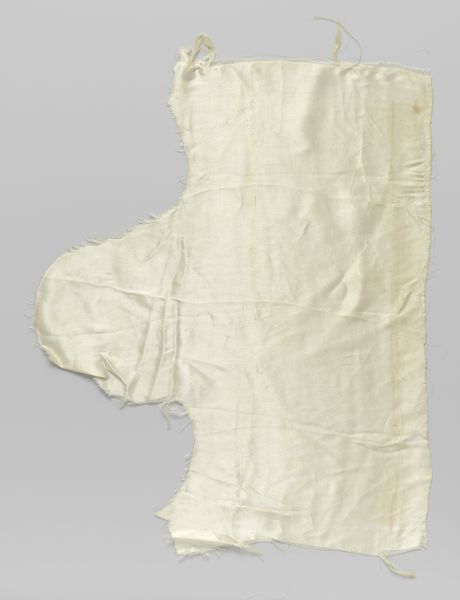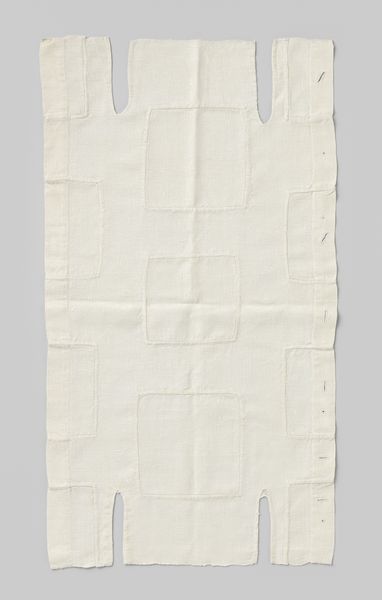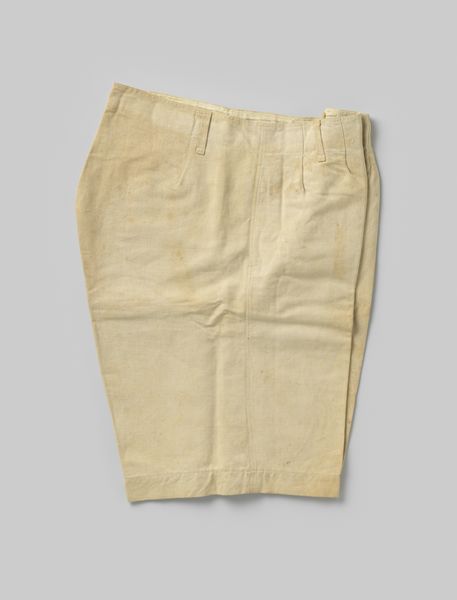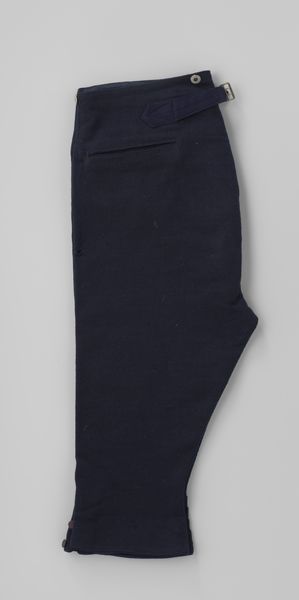
Broek in plus-fourmodel van beige katoen, met steekzakken in de zijnaden, gulp met benen knopen, onderaan een gespsluiting en aan de binnenkant van de taille acht knopen c. 1925
0:00
0:00
photography
#
still-life-photography
#
fashion mockup
#
fashion merchandise
#
clothing promotion photography
#
fashion based
#
photography
#
teen youth wear
#
clothing photography
#
clothing theme
#
clothing photo
#
imprinted textile
#
clothing design
Dimensions: length 100 cm, circumference 86 cm
Copyright: Rijks Museum: Open Domain
Editor: We're looking at a photograph of beige plus-four trousers made of cotton, dating from around 1925. The material looks so smooth and clean, almost sculptural. How might we approach its analysis, focusing on what’s presented? Curator: Considering the purely formal elements, one immediately notices the treatment of texture and form. The even lighting across the cotton surface allows the weave of the fabric to be subtly apparent, contributing to the volumetric shape of the trousers, don’t you agree? It seems meticulously rendered, yes? Editor: Absolutely, and I am fascinated by how this shape almost implies a human presence without actually showing one. The folds and curves make them feel worn but pristine at the same time. Curator: Note the stark background emphasizing the object's contour. How would you say it enhances the pure geometric structure, particularly how the light molds the material? Editor: It isolates them completely, directing all attention to their form. The way the leg tapers down to the fastened cuff…it's really elegant. Is there anything significant to unpack, even on such simple looking garment? Curator: The artist’s clear intention to celebrate line and shape using clothing – something utterly banal- demands a level of sophisticated reading. The photograph thus makes us aware of the very artifice of the object, divorcing it from mere function, in my assessment. The materiality of the object in itself is the theme! Editor: So it becomes about observation and interpretation rather than context, which reframes everyday garments as art. This was fascinating, seeing beyond the simple subject matter by using line, shape and shadow. Curator: Precisely, truly seeing means unraveling layers even when our initial encounter might suggest nothing much at all.
Comments
No comments
Be the first to comment and join the conversation on the ultimate creative platform.
